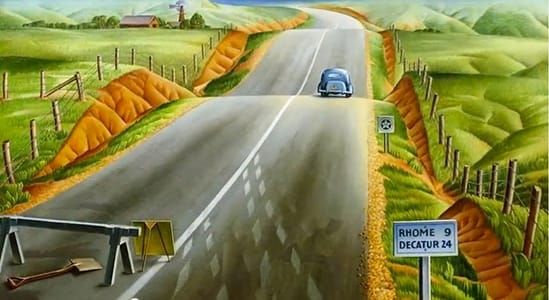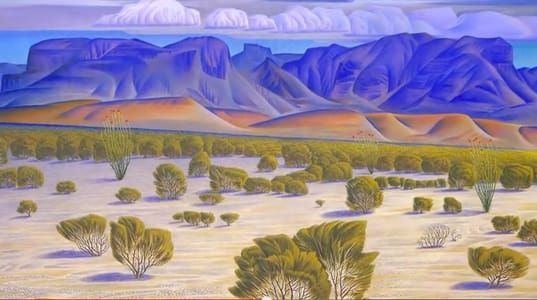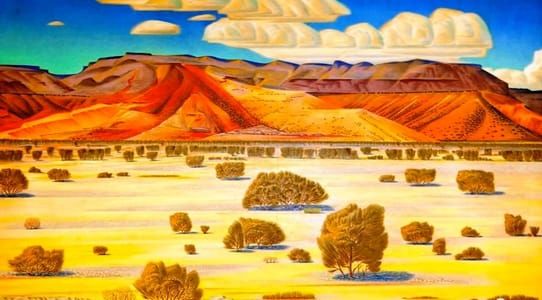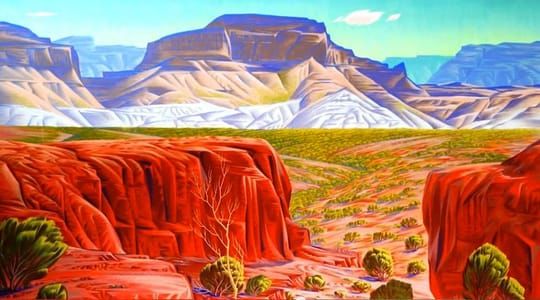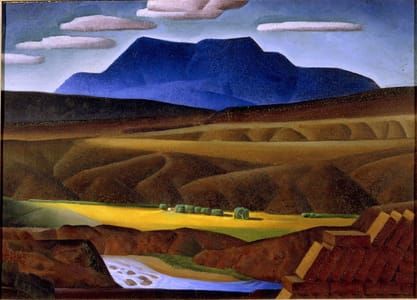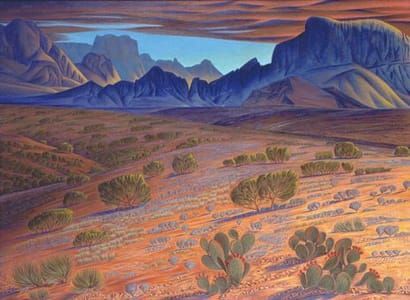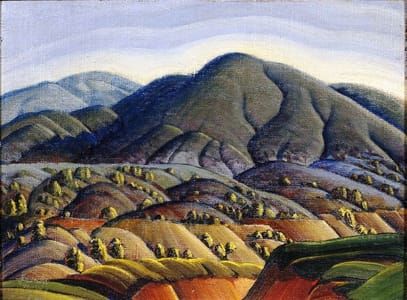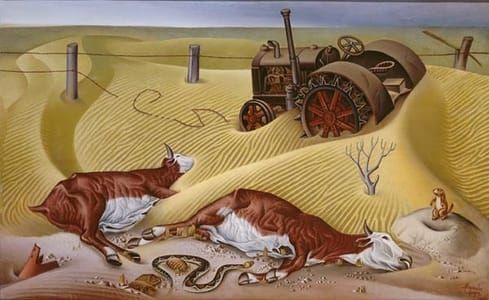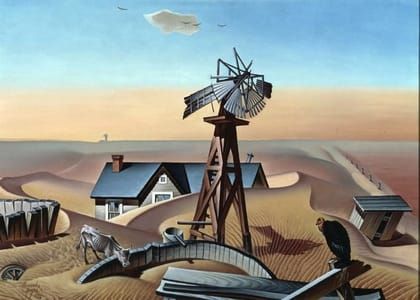

Dust Bowl, 1933
Alexandre Hogue
The dust storms of the 1930s moved millions of tons of topsoil across America's heartland, wiping out farms and ranches that had stood for generations. Hogue (Memphis, Missouri, 1898 - Tulsa, Oklahoma, 1994) was a young Missouri-born artist just making his reputation when the Depression and Dust Bowl ravaged the communities of the Southern Plains. He saw firsthand the mass exodus of families who packed what the banks had not taken and set out for California, hoping to find a better future. In Dust Bowl angular fence posts and spikes of barbed wire echo the malevolent wedge of blood-red earth obscuring the sky. Below the break in the fence, a single track of a truck tire leads away from the desolate farm, as if the family had just driven away and the dust moved to erase all traces of them.
[http://gandalfsgallery.blogspot.com/]
...show[s] a landscape described by Hogue as a "lush grassland" transformed into a desertlike place scarcely able to sustain life of any kind. Tractors and dead cattle half-buried in sand dunes, an abandoned farm with its broken windmill and dust-filled water trough, and the eerie light of a dust-choked, sandy, and barren ranch– all these images created an apocalyptic iconography that Hogue used to convey the reality of the situation on the Plains as well as his condemnation of the farming and ranching practices that had created it. Unlike the photographers of the Farm Security Administration, who also documented Depression Era conditions, Hogue expressed little sympathy for the families forced off the land by the Dust Bowl (in fact, they do not appear in his work) but instead made it clear that he held humans accountable for their deliberate misuse of the land.
(http://plainshumanities.unl.edu/encyclopedia/doc/egp.art.032)
24 x 33 in
Uploaded on Feb 24, 2017 by Suzan Hamer
Alexandre Hogue
artistArthur
coming soon
